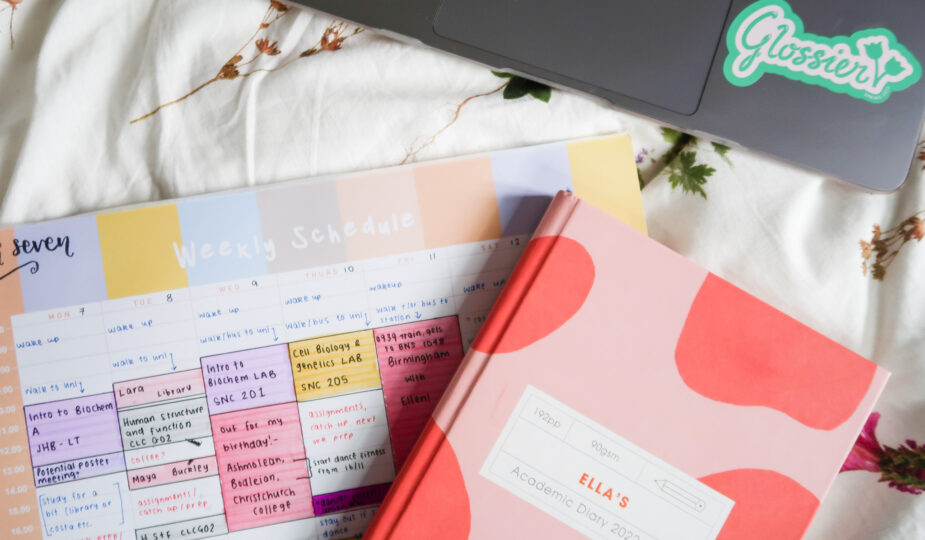Time management is one of those skills that some people just ‘get’. They’re just gifted in the art of time management, you see them and their life, and it just makes you go, “wow, I wish I could do that!”. I often get mistaken for being one of those people, but really all you’re seeing is an (apparently) very well-crafted illusion! Or at least that’s how it feels to me. I’m starting to think that maybe I do have a better grasp on time management than I believe myself to have, so I am going to share with you my guide to time management, drawn from my experiences of education, adulthood, and being a girl on the spectrum.
Just note, I am by no means a time management professional (if such a thing exists!), and so not every technique is going to work for everyone. But hey, you might also find out something handy that you didn’t know before!
A Guide To Time Management
(Particularly On The Autistic Spectrum)
Planning
Sounds so, so simple, doesn’t it? Planning. The world is full of chaos, full of unpredictability, full of unknowns, but there are some things that you just know are going to happen or that you need to do, and we can plan those. We can plan them well. The good news about planning as well is that there is a tonne of different ways to go about it, so you can find something that works for you and your needs.

Weekly Planners and Time Blocking (Short Term)
I do tend to abide by one rule, though, and that is it’s got to be visual. Mapping it out in your head alone may not quite cut it, I’m afraid. I use multiple techniques to plan things, even to plan the same thing sometimes. Firstly, I have a little weekly planner pad from It’s Paper Daisy, and I find it really helpful. It’s so simple; it simply has the days of the week running along the top and then times down the sides. I like using highlighters and blocking out my week using it. For example, most weeks, I have a Biochemistry lecture between 9am and 12pm on Monday, so I block out that time. If you’re in work or education, I think that time blocking visually is a really useful tool as you can then see where your free time is around it. If you’re interested, I’ve got my own weekly planner template in my blog shop, but I’ll include it (along with some other helpful links and things) at the end of the post.
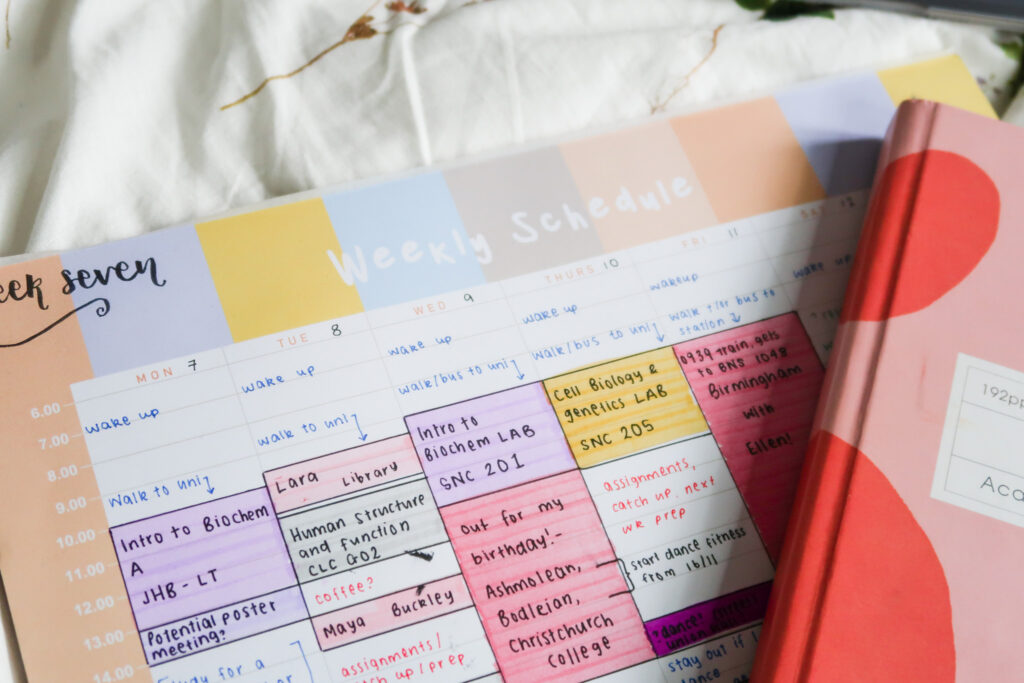
Previously, I have also used weekly planners that give an overview of the week. You can see at a glance what is happening on what day, or you could almost use it like a to-do list! Again, I have a template up which I think could be really useful for some people in my blog shop. All my templates can be used printed or digitally using software such as Goodnotes or Notability.
Future (Long Term) Planning
Future planning can be more difficult than just planning the next week or so, but it is possible to do. For instance, if you have a timetable for a whole term or semester, then voila, that is some of your future planning already done for you. Other things that would probably be classed as ‘future planning’ could be things such as hospital appointments, people’s birthdays, anniversaries, examination dates, dates that certain bills/direct debits come out, or the day you get paid (which in turn helps with any financial planning you may need to do), and dates that contracts end etc. All of these, although the specifics may be unknown right now, can be put into a plan. These types of plans are a lot vaguer than your weekly, monthly, or daily plans, so, you can use some kind of yearly planner or calendar for them. Because I’m in education, my year runs more September-August, so I have an academic diary and calendar that I use for future (or longer-term) planning. Most people work on the standard January-December calendar. And it is super exciting for you guys that do because it’s the prime time right now to go out and buy all your new calendars and diaries for next year!
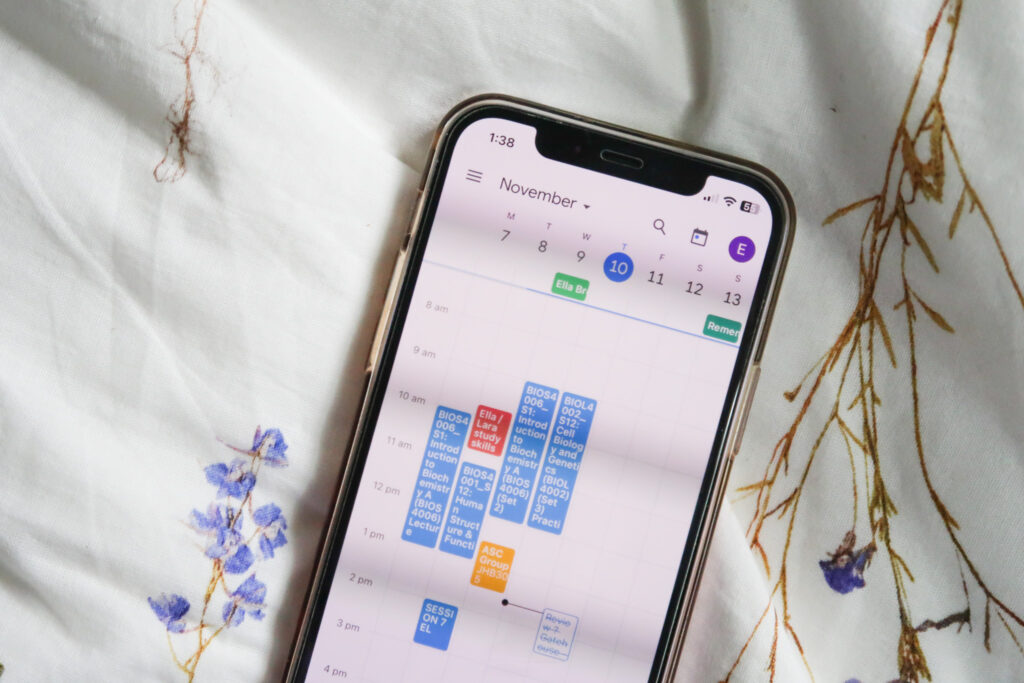
To-Do Lists
Another type of planning is, of course, the trusty to-do list. However, alone I find these a bit insufficient, so I add things to ‘buff’ them up a bit! I do this in several ways.
Firstly, I like to break down ‘big’ tasks into bite-sized chunks. This helps to make things seem more manageable because otherwise, I feel bogged down or fatigued before I even get started, and that isn’t helpful at all. An everyday task such as “tidying my room” can feel very overwhelming to me. But, there are a lot of parts to tidying my room, for instance: making my bed, sorting clothes into dirty and clean, putting the dirty clothes in the laundry basket, putting the clean clothes away, getting the rubbish into the bin, emptying the bin into bin bags… I think you can get the picture. Suddenly, this big task of tackling my room seems easier as it’s just a combination of much smaller, manageable tasks. Breaking tasks down like this can also help me feel more motivated and productive, and I feel like I can ‘tick’ more things off. If I get tired and can’t finish, it’s okay because I can look back on what I did achieve instead of just discarding it as a big task that I can’t do. At least some parts of it got completed instead of none of it. I think this technique can be very useful for breaking down school work and assignments as well. It’s been a while since I’ve been at school, but I do remember being set worksheets to do, or questions from a textbook. These tasks are easy to break down because you can just focus on getting through one question at a time, even if it takes a while to complete the whole worksheet. In fact, I would probably recommend taking breaks between some of the questions so that you don’t become overtired and then can’t complete it at all. It’s remembering to factor in enough time to work this way, and that’s why teachers always tell you not to leave it until the last minute. I think it’s part of being neurodivergent, but smaller bite-sized tasks are always the way to go for me, otherwise, everything is just so overwhelming, and nothing will ever get done!
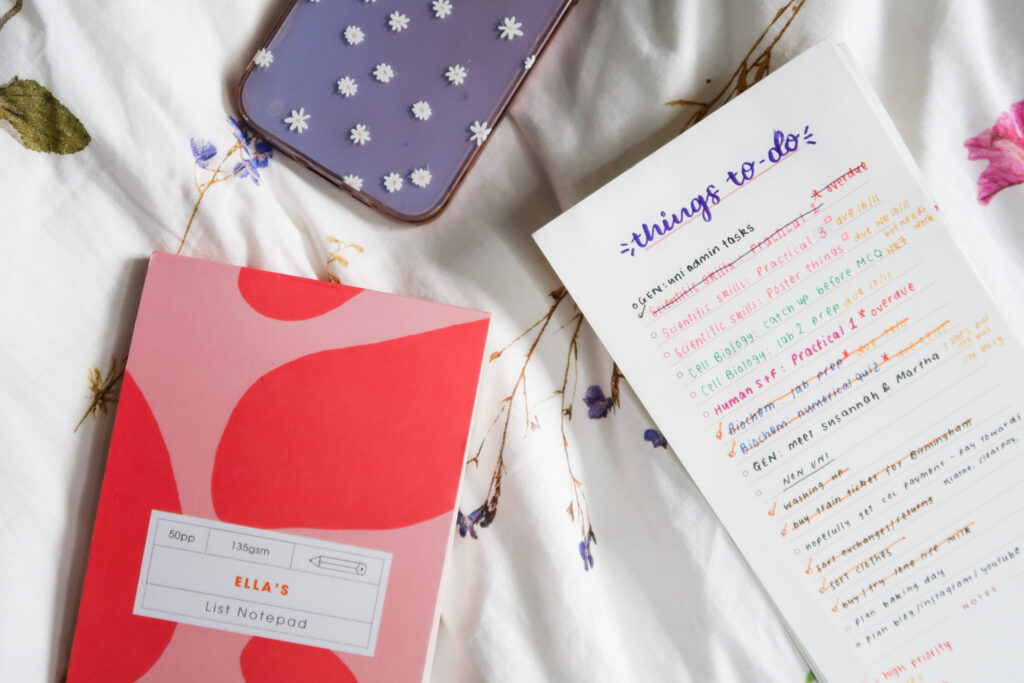
Another thing I almost always do with to-do lists is use some kind of priority indicator or marker, and I assign one to each main task. Looking at a big to-do list, even if it’s made up of small tasks, can leave you feeling frazzled, but if you know what the most important thing or things you need to do are, it’s a lot easier to tackle the whole list. I use this when planning my assignments, especially as the deadlines are very ‘clear-cut’, and I know that most of the time, the assignment that is due soonest is the one I need to do first. Of course, there are times when some assignments are generally bigger or more important than others regardless of the due date, but I use that as a rule of thumb. Personally, I think priority indicating is very important and helpful for managing tasks.
Personally, I use the Papier List Pads to write out most of my to-do lists. Occasionally, I will use another planner or bullet journal to write out my lists. Honestly, it depends on how I’m feeling and what I’m planning out. For instance, if I’m planning just a day or if I’m planning everything that needs to be done within a set timeframe etc.
Reminders
As well as planning out big tasks and things you need to do throughout the day or week, I think that having little reminders for some of the more ‘boring’ (but still super important) things is helpful and important as well. Like many people on the autistic spectrum (and I think it may be associated with ADHD too, which I also have), I struggle with a thing called interoception. Interoception is to do with recognising sensations within your body. This can range from hunger and thirst and needing to go to the toilet, to ‘bigger’ feelings such as overwhelm and stress. I feel that setting reminders to help you recognise these feelings in your body is a crucial and necessary part of time management because you can’t get your other tasks done if you haven’t satisfied your body’s needs first. It may seem childish but having reminders to rest, eat, drink, use the toilet, take medication etc., definitely need to be incorporated into any planners or to-do lists because they are equally, or in actual fact, more important than any work, school or other life demands. They can be easily overlooked, unfortunately, which is why I’m here reminding you how important it is to factor these things in. You can do this in a variety of ways. You could use post-it notes to remind you, you could simply write these things into your planners or to-do lists, or you could use apps to help you with this – which is what I’m going to discuss next
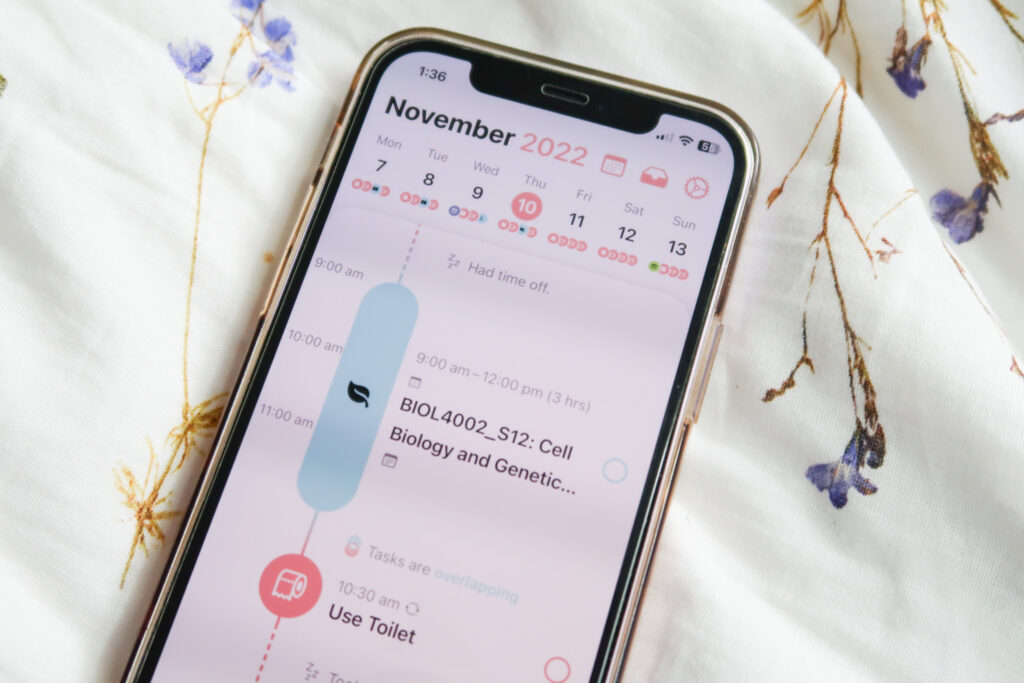
Apps
Everything I have mentioned so far within this ‘planning’ can be handwritten, or it can be written digitally, or both – it’s completely up to you. There are a whole manner of apps out there to help you with planning and keeping track of things, and it’s likely to take a bit of trial and error to work out which ones you like best.
Let’s start with calendars, a very basic but staple planning application. If you have an iOS device, Apple Calendars comes built in. With Android and Google devices, I believe that Google Calendar would be built-in. My university use the Google Suite in our emails and other applications, thus I now tend to use Google Calendar as my main calendar app but previous education establishments I’ve been in have used Microsoft, and Outlook has a calendar built into it that I’d use. There are so so many calendar apps that you can use, but those are the main ones I think! I also use a calendar app called ‘Structured’ as well because this app can be set-up to send you reminders of things and also give you daily breakdowns of tasks etc, so you could incorporate any reminders and even things to do in it as well!
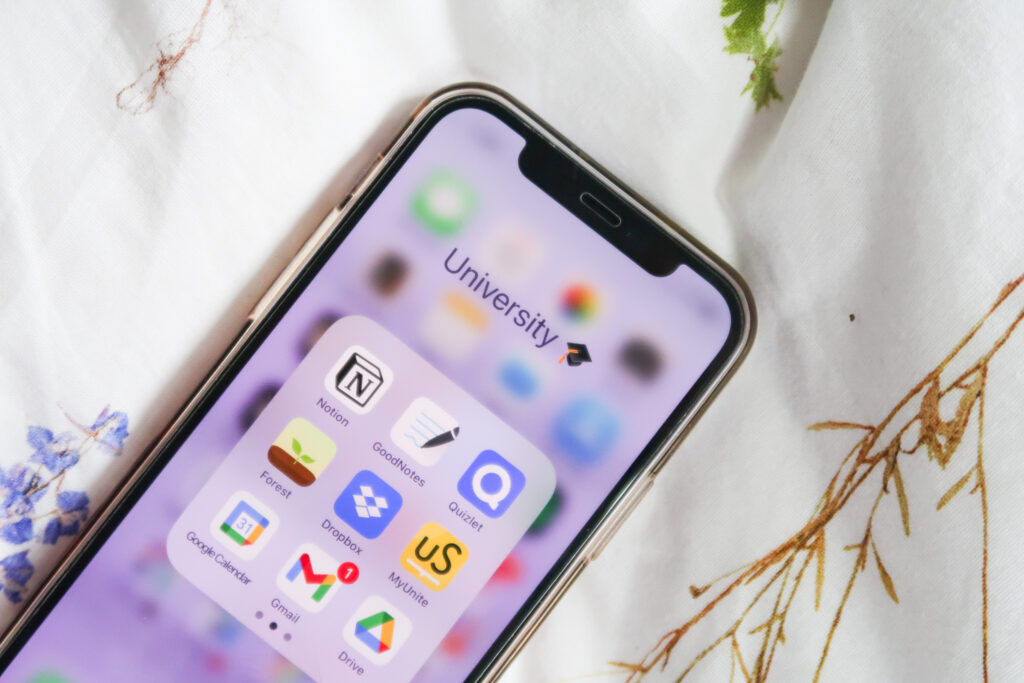
When it comes to reminders, to-do lists and day to day planning, there are another whole range of apps that you can use. You can use your device’s built in Reminders and Note apps, or a third party app. I’ve heard of an app called Tiimo which apparently is quite benefitical to people on the autistic spectrum! It’s very visual and simple, and I have used it before but I do go through phases with different apps sometimes so I’m not currently using it. Other apps along this kind of line include: Evernote, Todoist, Timetree (Shared Calendar), Notion, OneNote and there’s probably even more but I don’t want to overwhelm you too much. I hope some of those suggestions are useful!
I think that sums up the ‘Planning’ section of this post. Although planning can seem initially time consuming, in the long run it will actually help you save a lot of time and help you create and maintain routines. Having a plan means you know more or less what is going to happen, and all that’s left to do is action these plans – which is what we’re going to discuss next.
Productivity
(Completing tasks)
We’ve made all these plans and to-do lists, but how do we move on from here? There are a number of different ways we can tackle this.
Focus Timers and The Pomodoro Method
Hopefully by planning well, you haven’t made it so that you’re too overwhelmed by what you need to do but I completely understand that it can be difficult to get motivated and stay focused on tasks. I hoping I can lend a hand here.
Focus timers are a handy technique to help you get through those tasks that you need to do. As the name suggests, it’s simply setting a timer for a set period and then trying your best to work throughout that whole period with minimal distractions. There’s a really good app for this that I have used for years now called Forest. I think it may be a paid app but it’s so worth it (I’m not promoting this by the way, I genuinely have used this app for so many years now!). With Forest, you can set a time ranging from 10 minutes to 3 hours. In that time, your phone plants a little virtual tree while you focus on your task. You can also set up the app so that if you leave the app at any time while the timer is running, your tree will die. This encourages proper, deep focus and deters you from playing with your phone when you’re meant to be working. I think it’s a really cute app and it has really helped me over the years, of course it might not be for everyone but it works for me!
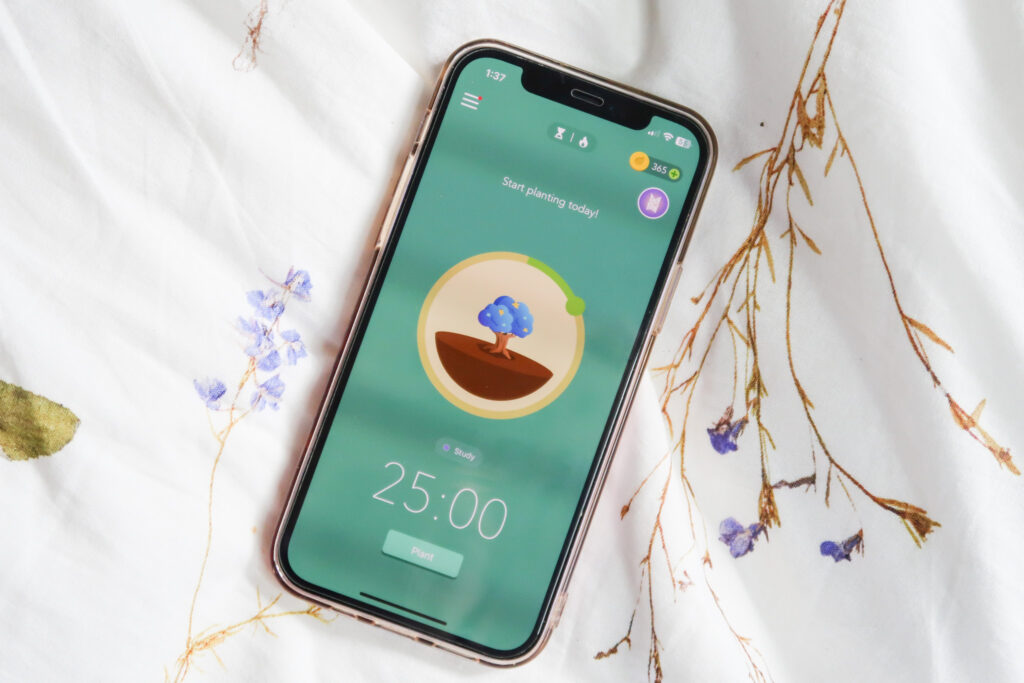
I mostly use Forest to put the Pomodoro Method into practice. The Pomodoro Method is a productivity/focusing method that involves working in a set of around four 25 minute bursts, each with 5 minute breaks in between, and then having a much larger break of half an hour or more before completing another set of 25 minute bursts. Personally, I think this method is really clever because it encourages breaks, but also encourages work and I think it equates to a really good balance and prevents you from burning out. Sitting and working solidly for hours and hours at a time is really going to fatigue you after a while, and so I’d really recommend this method to anyone! If you’re interested, I do actually have a Pomodoro Planner printable in my blog shop. It has 4 boxes for you to plan each of your 25 minute bursts and also a box at the bottom to help you plan what you’re going to do in your break to wind down, or you could write out what you’re going to reward yourself with. I think it could be really helpful for some people, which is why I created it!
Reward Systems
Another thing you can do to encourage/motivate your way through your tasks is by setting yourself little rewards for completing tasks or a set number of tasks. The types of reward are going to vary for everyone but some rewards could include: enjoying a chocolate bar after completing your tasks, watching a new or your favourite film, playing your favourite game, buying something small you’ve wanted for a while, going out and getting a coffee or cake, a nap, watching an episode of your favourite series… it really could be anything!
I think rewards are actually quite an important part of motivation because not everyone is particularly motivated or satisfied by just simply having the task complete. Some people feel like they need more than that, and that the task needs to benefit them somehow, and planning rewards or incentives for completing your tasks is a very good way of doing that. Plus I find that having a complete to do list is so satisfying personally.
Rest
It may not seem like it, but throughout this whole post I’ve been implying that the most important part of time management is rest. And it is. Without allowing yourself adequate rest or proper breaks from your work or tasks, you will end up making yourself unwell. It is possible to live a very busy, productive life and also get enough rest, I hope that reading the techniques I have outlined in this post helps you understand that. It is possible to have a good work/life balance, and whereas it can sometimes be difficult to start and build up, you will get there eventually. You will find what works for you. It’s also absolutely okay to ask for extra help if you need it from your school or workplace or even just a friend or family member. It is in your best interests to live the life you want, get the things done you need to get done, and rest and so you may as well do everything you can to make that all as easy as possible for you.

But yes, I will say it again. Rest is the most important thing. Without it, the things you want to do and the things you need to do can’t happen. So make sure that that point is glued firmly in your brain. REST IS IMPORTANT!
On a serious note, if you’re struggling with feelings or physical problems that are making it difficult for you to do work or to rest (problems can occur with both, trust me I’ve been there) please do not hesitate to speak to a professional or charitable organisation that can help you. There are techniques to help you feel less fatigued or anxious or stressed or whatever you may be feeling that is preventing you from having your ideal work/life balance. I honestly understand how hard some things can be, this is from someone who has chronic illness, mental health issues and disabilities, but there are things that can help, even if they only help sometimes. In some cases you may be able to get counselling or therapies if you need them, or even medications to help you as well. Never lose hope because there will be something out there that’ll help make your life easier (and yes I know it’s so easy to lose hope, I go through it all the time, but I’m still here living despite everything and so are you so we can absolutely get through this together!)
Helpful Links
As I mentioned throughout this post, here are some links to things I hope you find useful
- Weekly Planner – Sprinkles of Ella Blog Shop
- Weekly Overview – Sprinkles of Ella Blog Shop
- Pomodoro Planner – Sprinkles of Ella Blog Shop
- Weekly Planners – It’s Paper Daisy
- Forest – App
- Pomofocus.io – Web Based Pomodoro Timer
- Evernote – App
- Todoist – App
- TimeTree – App
- Notion – Web/App
- OneNote – App
- Tiimo – App
- Structured – App
- Goodnotes – App
- Notability – App
- Papier – Planners, List Pads, Bullet Journals
- Mind: What is stress?
- NHS Scotland: Time Management Tips
- National Autistic Society: Organising and Prioritising
I’ve really tried to include as much helpful information as possible in regards to time management, especially coming from a neurodiverse and disabled background. I really hope that this post is helpful to even just one person out there, and I know it’s a lot to read but I really hope you appreciate it. I hope I can continue to write posts like this to help people because I like thinking that I have helped make a positive difference to someone’s life!
Happy productivity, and stay well besties ♡

